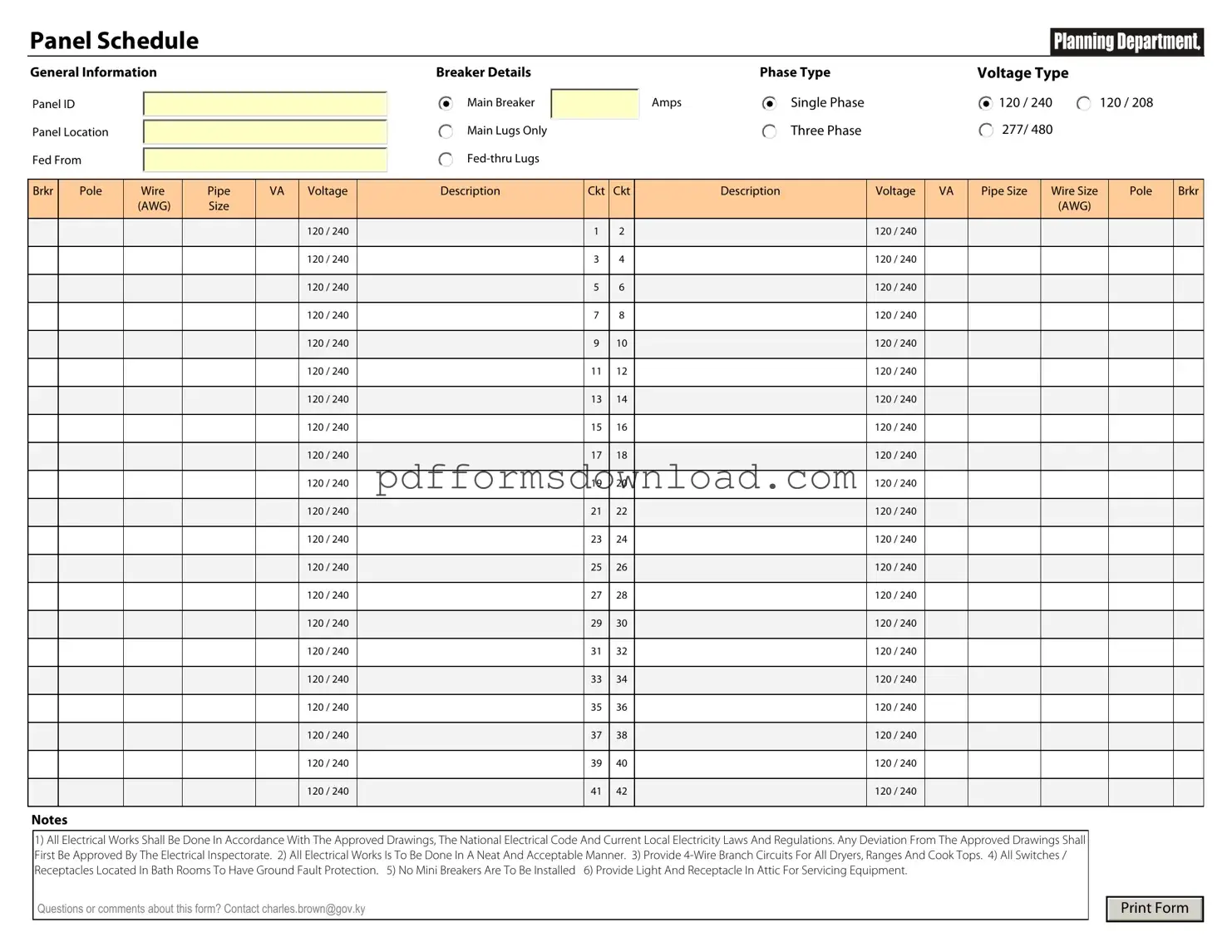What is an Electrical Panel Schedule form?
The Electrical Panel Schedule form is a document that lists all the circuits connected to an electrical panel. It provides essential details such as the circuit number, amperage, voltage, and the specific areas or equipment each circuit serves. This form helps in organizing electrical systems and ensures that users can easily identify and manage their electrical circuits.
Why is it important to have an Electrical Panel Schedule?
An Electrical Panel Schedule is crucial for several reasons. It enhances safety by allowing quick identification of circuits during maintenance or emergencies. It also aids in troubleshooting electrical issues, ensuring that repairs can be made efficiently. Additionally, having a clear schedule helps in compliance with electrical codes and standards, which may be required for inspections.
How often should the Electrical Panel Schedule be updated?
The Electrical Panel Schedule should be updated whenever there are changes to the electrical system. This includes adding new circuits, removing old ones, or reassigning circuit functions. Regular reviews, at least annually, are recommended to ensure the information remains accurate and reflects the current state of the electrical system.
Who is responsible for creating and maintaining the Electrical Panel Schedule?
What information should be included in an Electrical Panel Schedule?
An effective Electrical Panel Schedule should include the following information: circuit number, circuit description, load (in amps), voltage, breaker size, and the location of the circuits. It may also include notes on any special considerations, such as whether a circuit is dedicated to specific equipment or if it serves multiple areas.
